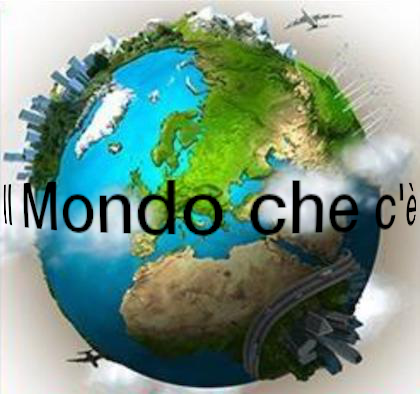1 – Ioannis Kaiserlis nel suo studio Il designer d’interni greco Ioannis Kaiserlis, scopre un’inattesa vena creativa che lo spinge a dar vita a opere d’arte vere e proprie, forte dell’esperienza nel campo dell’arredamento e consapevole che un ambiente si arricchisce e si illumina grazie alla presenza di una tela in grado di emozionare, di far vibrare le corde intime dell’osservatore. Sceglie, proprio in virtù di questa consapevolezza espressiva, così come dell’esigenza di non lasciarsi ingabbiare dalle regole accademiche e predeterminate della figurazione che percepirebbe come un limite al fluire interiore che vuole invece fuoriesca, un approccio pittorico legato all’Astrattismo, declinato di volta in volta sulla base del soggetto che desidera rappresentare, del concetto che necessita di liberare e della sensazione che preme per essere espressa in maniera più o meno incisiva. Si avvicina all’Espressionismo Astratto quando il gesto pittorico è più istintivo, quasi primordiale e irrefrenabile nell’urgenza comunicativa, e poi passa all’Informale Materico nei momenti in cui il suo estro si sofferma sulla contemplazione, su eventi naturali che non possono fare a meno di colpirlo ma anche di indurlo a riflettere sull’esiguità dell’essere umano davanti alla grandezza del mondo che lo ospita, dei fenomeni atmosferici che spesso lo travolgono, svelando così un sentire molto vicino alle tematiche del Romanticismo inglese, quello di quel William Turner che fece del rapporto tra uomo e impetuosità della natura il fulcro della propria produzione artistica. Dunque poetica romantica ma stile pittorico contemporaneo quello di Ioannis Kaiserlis, in particolar modo nell’opera The Wave of Venetian Life, 2 – The wave of Venetian life un grande trittico che vuole essere testimonianza della grande alluvione della città marinara a seguito della quale le persone, ma anche la natura, si sono ricostruite, rigenerate, hanno ricreato ciò che dalla natura è stato impietosamente distrutto. Il linguaggio artistico è dunque strutturato, consistente, perché funzionale a coniugare il pensiero dell’artista, il suo concetto filosofico, con l’evidente irruenza dell’accadimento e dunque è stato necessario utilizzare un approccio Informale Materico in cui la sovrapposizione dell’olio con le immagini 3D si fonde con i materiali utilizzati per dare rilievo, spessore e plasticità alla scena descritta, quella in cui il mare è entrato nella città e ha distrutto ciò che ha trovato sul suo travolgente percorso. Nel paesaggio surreale che si svela un attimo dopo l’inondazione, Ioannis Kaiserlis lascia intravedere la testimonianza e la disorientante copresenza della vita interrotta, le gondole e le persone completamente investite dall’onda distruttrice, e quella degli animali del mare, come pesci e delfini, che improvvisamente si trovano in un ambiente sconosciuto, destabilizzante e spaventoso perché non appartenente al loro habitat. Il risultato finale è un groviglio indefinito, un luogo devastato e da ricostruire perché in fondo tutto ciò che l’uomo può fare, nel momento in cui si imbatte nella forza impetuosa della natura, è rialzarsi e ricominciare dal punto in cui tutto si era interrotto, più consapevole della sua esilità ma conscio di quella forza interiore che gli permette di rigenerarsi tanto quanto è in grado di fare la natura stessa nel momento in cui l’uomo corrompe il suo equilibrio, il suo cerchio vitale, attraverso l’intervento tecnologico e industriale. Ma andiamo a conoscere meglio l’artista che ha scelto di rendere una città italiana, Venezia, protagonista di una delle sue opere più importanti. Ioannis, ci può spiegare cosa ha significato per lei realizzare questo dipinto? Ho iniziato a creare l’opera d’arte con lo stile astratto. Mentre dipingevo il secondo dei tre quadri, una persona vicina a me ha notato la gondola che avevo disegnato. Poi, grazie al suggerimento di un altro amico, mi sono reso conto che la gondola era un segno per catturare la distruzione di Venezia. Ci sono voluti sei mesi per completare il trittico, dopo diversi cambiamenti, lavoro e passione. Ho sentito il bisogno da un lato di mettere in evidenza il deterioramento quotidiano della natura e la sua reazione all’azione di disturbo da parte delle azioni dell’uomo nei confronti dell’equilibrio universale e dall’altra parte, la presenza costante ricerca della Divina Provvidenza, che comunque interviene per salvare l’uomo e nel caso specifico Venezia. C’è un messaggio ecologista nel quadro oppure la sua è semplicemente una presa d’atto di ciò che è avvenuto, come se fosse una testimonianza storica di un evento che si è verificato? Effettivamente c’è un messaggio ecologico. L’opera d’arte è un esempio tangibile di disastro naturale come risultato della negligenza umana e presenta il diluvio di Venezia. La sicurezza della casa e la protezione che offre, da data, diventa discutibile quando la natura decide di cogliere l’occasione e rispondere con ostilità alle forzature che l’uomo esercita su di lei. L’attività umana è un processo che causa un danno gradualmente irreparabile all’ambiente naturale. Il paesaggio urbano spesso viola le regole della natura, spreca le sue risorse e crea inavvertitamente luoghi concreti di falsificazione dell’uomo stesso, e non luoghi di sviluppo dello spirito. L’uomo non rispetta quell’antica e personificata figura di Madre Natura che fin dall’inizio del suo percorso e della sua evoluzione in qualsiasi ambiente geoculturale ha iniziato a venerare. Dunque quest’opera è in un certo senso un omaggio a Lei. Ci spieghi il motivo della scelta di mescolare tre tecniche differenti tra loro, anche se decisamente complementari; è un arricchimento pittorico o una sua esigenza di non fermarsi a un solo stile perché la sua espressività ha bisogno di spazi più ampi? Ho deciso di utilizzare tre diverse tecniche per poter evidenziare l’importanza dell’opera, per catturare ogni dettaglio, per mostrare la capacità di realizzare tocchi ed elementi tridimensionali e la tecnica di graffiare la tavola per catturare i detriti. Volevo che l’osservatore percepisse l’intensità dell’opera attraverso le tre diverse tecniche e al tempo stesso che emergesse la mia profonda convinzione che è proprio nel caos che si generano nuove idee, nuovi punti di vista, nuove opportunità, è dall’oscurità che si ricomincia a vedere la luce, il movimento, la vita. Quali sono i suoi progetti per il futuro? Ha in previsione mostre o pubblicazioni importanti? Nel prossimo futuro ho intenzione di realizzare una mostra online, in modo che il pubblico conosca una parte del mio lavoro attraverso le descrizioni che darò per i miei dipinti. In seguito, quando le condizioni lo permetteranno, voglio presentare tutte le mie opere. Naturalmente continuerò a dipingere, ad attribuire alla tela il mio mondo e la mia anima, a sviluppare la mia arte e a sperimentare stili diversi e anche la scultura. In particolare, voglio riuscire a esporre a Venezia “The wave of Venetian life”, che mi ha ispirato. La mia fede mi ha portato all’amore e alla passione nei confronti della pittura! CONTATTI DELL’ARTISTA Ioannis Kaiserlis: Sito web: https://kaizerart.com Facebook: https://www.facebook.com/profile.php?id=100013878070886
ENGLISH VERSION Marta Lock’s interviews: Ioannis Kaiserlis, the Informal Material to describe the impetuousness of nature The Greek interior designer Ioannis Kaiserlis, discovers an unexpected creative vein that pushes him to give life to real works of art, strong of the experience in the field of furniture and aware that an environment is enriched and illuminated thanks to the presence of a canvas able to excite, to make the intimate strings of the observer vibrate. He chooses, precisely because of this expressive awareness, as well as the need not to let himself be caged by the academic and predetermined rules of figuration that he would perceive as a limit to the inner flow that he wants to escape, a pictorial approach linked to Abstraction, declined from time to time on the basis of the subject he wants to represent, the concept he needs to free and the feeling that presses to be expressed in a more or less incisive way. He approaches Abstract Expressionism when the pictorial gesture is more instinctive, almost primordial and irrepressible in its communicative urgency, and then moves on to the Informal Material in the moments in which his inspiration dwells on contemplation, on natural events that cannot help but strike him but also induce him to reflect on the smallness of the human being before the greatness of the world that hosts him, the atmospheric phenomena that often overwhelm him, thus revealing a feeling very close to the themes of English Romanticism, those of that William Turner who made the relationship between man and the impetuousness of nature the fulcrum of his artistic production. Therefore, romantic poetic poetic romantic but contemporary pictorial style, that of Ioannis Kaiserlis, especially in his work The Wave of Venetian Life, a great triptych that wants to be a testimony of the great flood of the seaside town after which people, but also nature, have rebuilt, regenerated and recreated what has been mercilessly destroyed by nature. The artistic language is therefore structured, consistent, because it is functional to combine the artist’s thought, his philosophical concept, with the evident impetuousness of the event and therefore it was necessary to use an Informal Material approach in which the superimposition of oil with 3D images merges with the materials used to give relief, thickness and plasticity to the scene described, the one in which the sea entered the city and destroyed what it found on its overwhelming path. In the surreal landscape that is revealed a moment after the flood, Ioannis Kaiserlis lets us glimpse the testimony and disorienting co-presence of interrupted life, the gondolas and people completely swept away by the destructive wave, and that of the animals of the sea, such as fish and dolphins, who suddenly find themselves in an unknown environment, destabilising and frightening because they do not belong to their habitat. The final result is an indefinite tangle, a place devastated and to be rebuilt because, after all, all that man can do, when he comes across the impetuous force of nature, is to get up and start again from the point where everything had stopped, more conscious of his slenderness but aware of that inner force that allows him to regenerate as much as nature itself is able to do when man corrupts his balance, his vital circle, through technological and industrial intervention. But let’s get to know better the artist who has chosen to make an Italian city, Venice, the protagonist of one of his most important works. Ioannis, can you explain what it meant to you to make this painting? I started to create the artwork abstractly. As I was painting the second of the three paintings, a person close to me noticed the gondola I had designed. Then with the suggestion of an another friend I realized that the gondola (20201208_215518.jpg) was a sign to capture the destruction of Venice. It took six months to complete the triptych, after several changes, work and passion for development. I felt the need on the one hand to highlight the daily deterioration of nature and its reaction to the disturbing action of man’s actions towards universal equilibrium and on the other hand, the constant search presence of the Divine Providence, which in any case intervenes to save man and in the specific case Venice. Is there an ecological message in the artwork or yours it’s simply an acknowledgement of what happened, as if it were a historical testimony of an event that took place? Yes actually, there is an ecological message. The artwork is a tangible example of natural disaster as a result of human negligence and presents the flood of Venice. The security of the house and the protection it offers becomes questionable when nature decides to rebe the and respond with hostility to the forcing that man exerts on her. Human activity is a process that causes gradually irreparable damage to the natural environment. The urban landscape often violates the rules of nature, wastes its resources and inadvertently creates concrete places for the falsification of man himself, and not sites for the development of the spirit. Man does not respect that ancient and personified figure of Mother Nature that from the beginning of his path and his evolution in any geocultural environment he began to venerate. So this work is in a certain sense a tribute to her. Explain to us why you chosed to mix three different techniques, even if they are definitely complementary; is it a pictorial enrichment or is it a need of yours not to stop at a single style because its expressiveness needs more space? I decided to use three different techniques to be able to highlight the greatness of the artwork, to capture every detail, to show the ability to make three-dimensional touches and elements and the technique of scratching the board in order to capture the debris. I wanted the observer to perceive the intensity of the work by the three different techniques. and at the same time that my deep conviction emerged that it is precisely in chaos that new ideas, new points of view, new opportunities are generated, it is from the darkness that we begin to see light, movement, life again. Which are your projectsr for the future? Are you planning important exhibitions or publications? In the near future I plan to make an online exhibition, so that the public knows a part of my work through the descriptions I will give for my paintings. Later, when conditions allow, I want to present all my works. Of course I will continue to paint, to attribute my world and my soul to the canvas and to develop my art and to evolve my experiments and my contemporary sculptural art. Specifically, I want to exhibit “The wave of the Venetian Life” in Venice, which inspired me. My faith has led me to love and passion for painting!
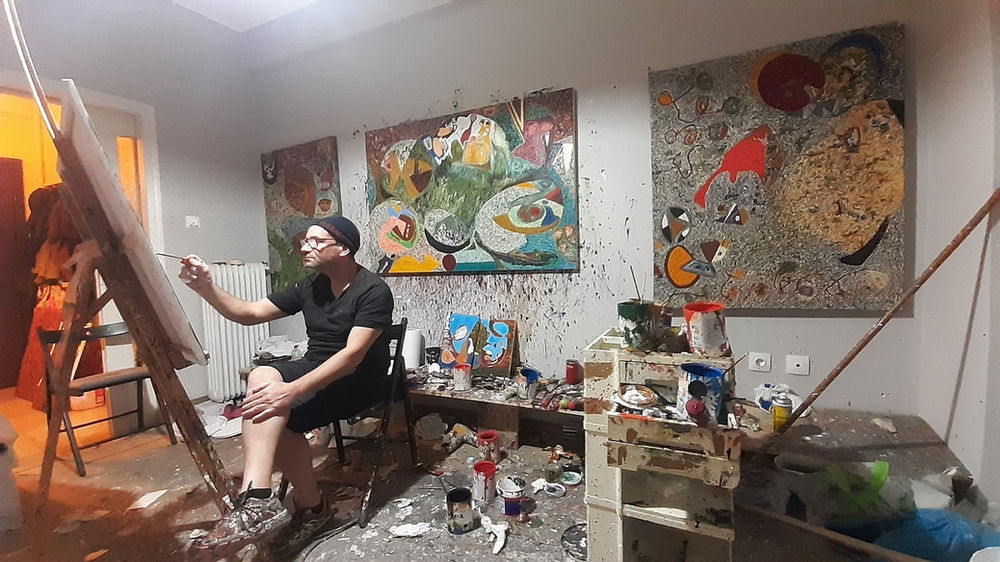 [/caption]
[/caption]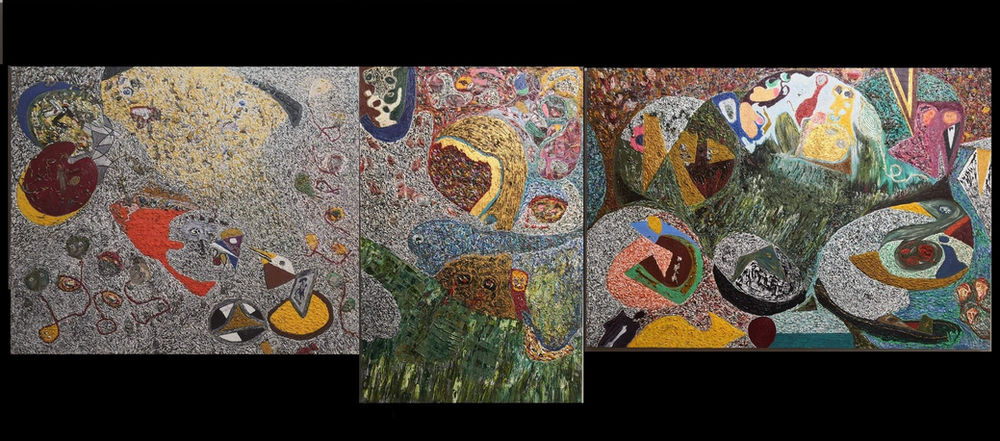 [/caption]
[/caption]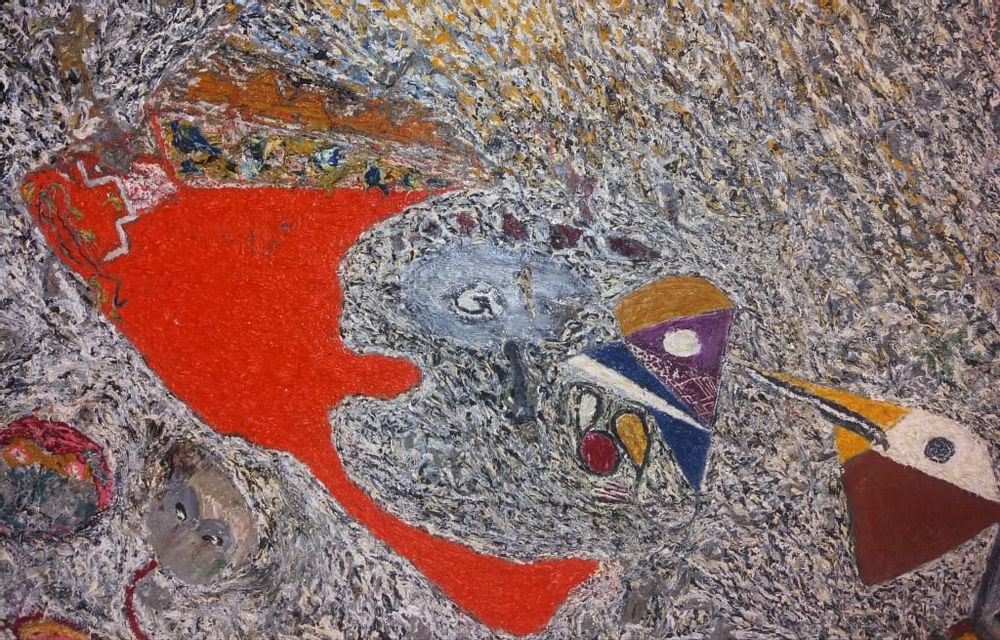 [/caption]
[/caption] [/caption]
[/caption]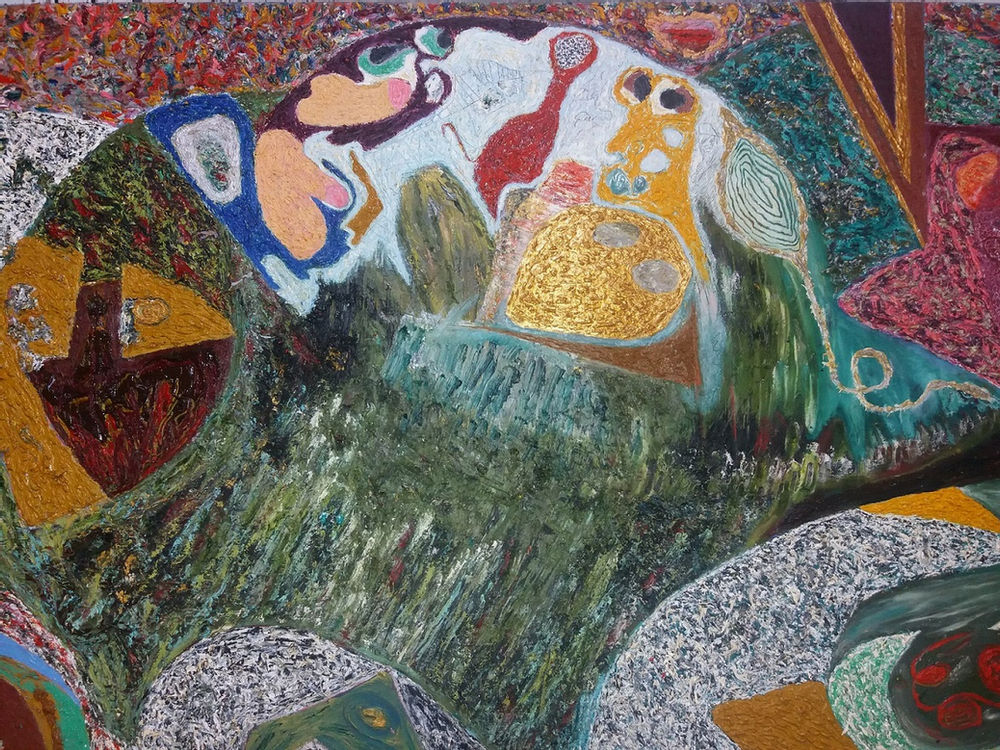 [/caption]
[/caption]